Gamma Knife
Founded in November 2008 at Saint-Petersburg, the radiosurgery center of MIBS is equipped with a radio surgical installation unit Gamma-knife (Leksell Gamma Knife Perfexion) manufactured by a Swedish company Elekta.
In March 2011, the radiosurgery center of MIBS was given a special certificate of the Swedish company Elekta. That marked the execution of 1000 radio surgical operations on the Gamma knife unit (Leksell Gamma Knife).
Today after more than 9 years of experience, specialists of the center have performed more than 6000 neurosurgical interventions.

The center has all capacities for modern highly qualified radio surgical treatment of patients with brain tumors, vascular malformations and functional pathologyand it is also comprised of in-patient department accommodating 50 patients from other cities, computer tomography and magnetic resonance tomography rooms. The personnel of the clinic received long-term training in world`s leading Gamma knife centers.
Indications for Gamma Knife® Treatment
Gamma Knife® can be used to treat an array of benign and malignant tumors located in the cranial cavity, brain metastases, vascular malformations, trigeminal neuralgia, choroid, and other diseases.Gamma Knife® treatment is NOT indicated in the following cases:
 Severe decompensated condition of the patient
Severe decompensated condition of the patient The presence of acute symptoms of brain compression
The presence of acute symptoms of brain compression Increased intracranial pressure
Increased intracranial pressure
Brain tumors
 Neuromas of the auditory nerve
Neuromas of the auditory nerve Meningiomas
Meningiomas Pituitary adenomas
Pituitary adenomas Single and multiple metastases
Single and multiple metastases Craniopharyngiomas
Craniopharyngiomas Chordomas
Chordomas Neuromas of V, VII, IX, X, XI, XII nerves
Neuromas of V, VII, IX, X, XI, XII nerves Hamartoma of the hypothalamus
Hamartoma of the hypothalamus Pinealomas
Pinealomas Germinomas
Germinomas Hemangioblastoma
Hemangioblastoma Hemangiopericytomas
Hemangiopericytomas Glomus tumors
Glomus tumors Cerebrovascular disease
Cerebrovascular disease Arteriovenous malformations
Arteriovenous malformations Cavernomas
Cavernomas Relapse of glial tumors or residual tumors
Relapse of glial tumors or residual tumors Hemangiomas
Hemangiomas
Cerebrovascular disease
 Arteriovenous malformations
Arteriovenous malformations Cavernomas
Cavernomas Hemangiomas
Hemangiomas
Functional Brain Diseases
 Trigeminal neuralgia
Trigeminal neuralgia Parkinsonism and essential tremor
Parkinsonism and essential tremor Temporal epilepsy
Temporal epilepsy Multifocal epilepsy
Multifocal epilepsy Pain syndrome with thalamic syndrome
Pain syndrome with thalamic syndrome Pain syndrome with multiple bone metastasis of the axial skeleton
Pain syndrome with multiple bone metastasis of the axial skeleton
Eye diseases
 Progressive Glaucoma
Progressive Glaucoma Choroidal melanoma
Choroidal melanoma
What is Gamma Knife®?
Gamma Knife® (Leksell Perfexion) is a radiosurgical device manufactured by the Swedish company Elekta, designed to treat pathological lesions (benign and malignant tumors and vascular malformations) in the cranial cavity. Gamma Knife® works like a non-invasive surgical knife by using 196 converging radiation beams from of cobalt-60 sources.
The advanced Gamma Knife® is a high-tech computerized device based on latest achievements of medical radiology, neurosurgery and robotics.
Like a neurosurgical operation, the Gamma Knife® treatment procedure is performed only once, however, there are no skin incisions and there is no need to perform craniotomy.
Radiation from 196 cobalt-60 sources passes through the holes in the collimator helmets to the selected target point. While radiation of each individual beam does not have a damaging effect on the brain, when converged in the isocenter, they create a high total dose sufficient to kill the tumor or obliterate arteriovenous malformations. The targeting accuracy is less than 0.5 mm, which completely excludes the irradiation of healthy brain tissue and the entire body.

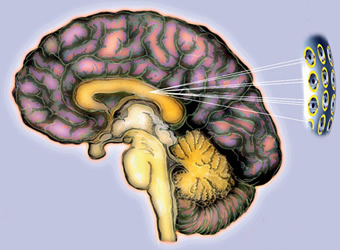
Under the impact of a high dose of radiation, the DNA of tumor cells is destroyed, the cells lose its ability to multiply and gradually die. Some tumors completely "dissolve" and disappear, some remain the same size, or shrink and never grow again.
The treatment of arteriovenous malformations involves obliteration of pathologic vessels causing the blood flow in them to stop. In this case the total shutdown of the malformation from the bloodstream leads to the complete cure of the patient from this disease.
Radiosurgery is considered to be the most significant achievement in the development of neurosurgery in the last 20 years. Thanks to its reliability, accuracy and efficiency, Gamma Knife® is considered to be the “gold standard” in radiosurgery.
The first Gamma Knife® treatment was performed in 1968, and over a million patients have been treated since then. Today, there are more than 300 Gamma Knife® departments in the developed countries all over the world.
Efficiency and safety
The effectiveness and safety of the treatment are confirmed by long observation periods (more than 50 years) and are reflected in more than 2000 publications.
Due to its reliability, accuracy and efficiency, Gamma Knife® is recognized as the “gold standard” in radiosurgery. It has a targeting accuracy of 0.5 mm in automatic mode, which completely eliminates the risk of errors.
Gamma Knife® operating principle is based on the damage of tumor DNA, which leads to the death of tumor cells.
Treatment of arteriovenous malformations involves obliteration of the blood vessels causing vascular thrombosis and shutting down the obliterated vessels from the bloodstream.
Gamma Knife® Treatment is carried out in just one procedure and usually takes several hours.
Gamma Knife® treatment is completely painless and does not require general anesthesia. There are no skin incisions in most cases, patients return to their daily activities the day after treatment.
Treatment is possible for any lesion sites, including those located at the skull base and in the deep structures of the brain.
Gamma Knife® Advantages
-
 Tumor treatment anywhere in the body
Tumor treatment anywhere in the body -
 Continuous tracking, control and correction of tumor and patient movements during the procedure
Continuous tracking, control and correction of tumor and patient movements during the procedure -
 High doses of radiation with submillimeter accuracy, minimal damage to surrounding healthy tissues
High doses of radiation with submillimeter accuracy, minimal damage to surrounding healthy tissues -
 Treatment of tumors from almost any direction thanks to the flexibility and mobility of the robotic system
Treatment of tumors from almost any direction thanks to the flexibility and mobility of the robotic system -
 Possibility of treatment for patients whose tumors were previously considered inoperable or required complex surgical intervention
Possibility of treatment for patients whose tumors were previously considered inoperable or required complex surgical intervention -
 Treating a patient in just a few sessions (from one to five)
Treating a patient in just a few sessions (from one to five) -
 Improving the quality of life of the patient during and after treatment
Improving the quality of life of the patient during and after treatment -
 A non-invasive alternative to surgery
A non-invasive alternative to surgery -
 Painless procedure, no anesthesia required
Painless procedure, no anesthesia required -
 Minimal side effects
Minimal side effects -
 Outpatient procedure with minimal or no recovery time
Outpatient procedure with minimal or no recovery time -
 The patient may immediately return to his daily activities
The patient may immediately return to his daily activities
PHOTO AND VIDEOS



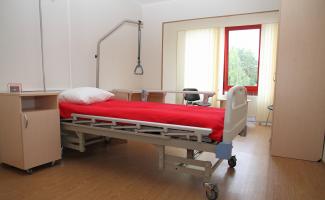



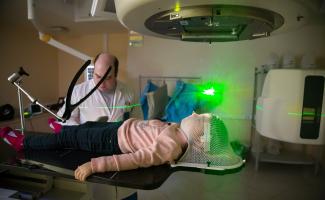
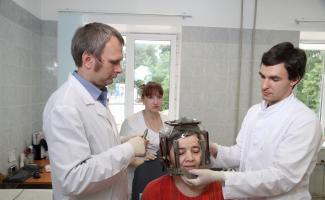
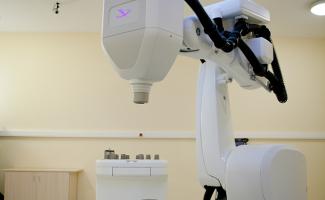
Chat with us ![]()

Abu Dhabi, UAE
